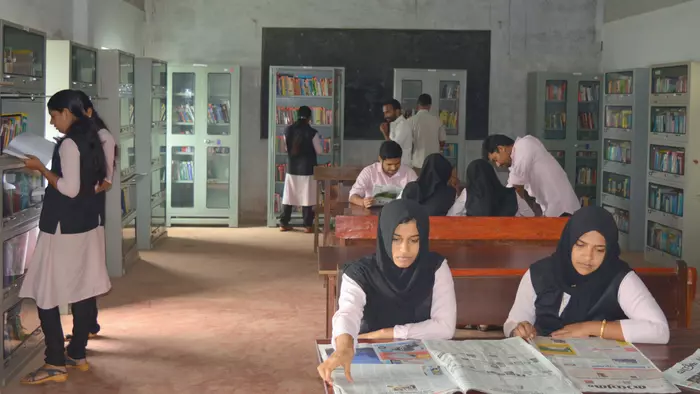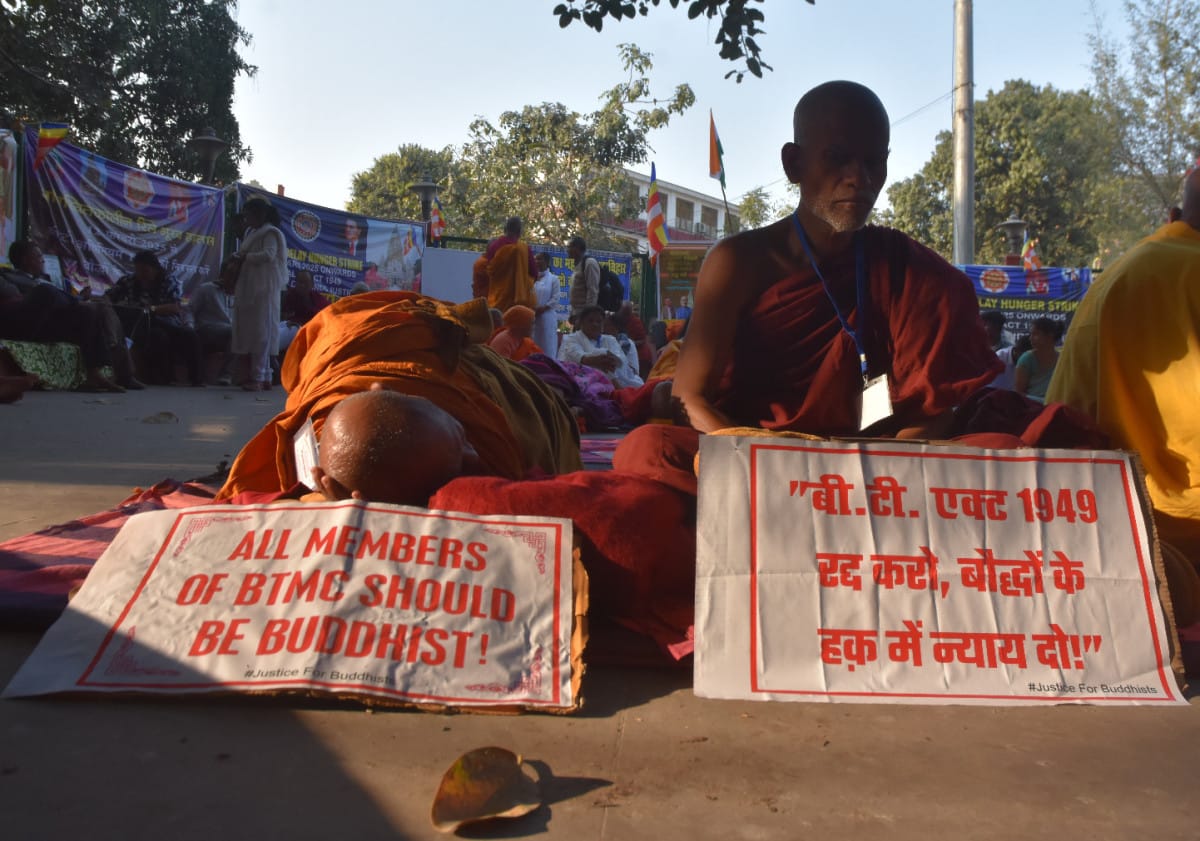For some time now, India has witnessed the troubling rise of Hindutva politics. With Hindutva gaining ground steadily and finding popular favour, it is now increasingly permeating every aspect of public life, at an alarming rate. As more and more of public life is conceded to the ideology and sacrificed at the altar of its extremism, we are not only faced with the threat of a radicalised and indoctrinated people today, but of an entire generation of children drawn into the Hindutva fold; through exposure and persistent indoctrination, undoubtedly, but also by normalising violent bigotry and positioning it as a quotidian feature.
While systematic efforts by Hindutva groups to beguile children and plenty of exposure to ideas of Hindu nationalism are responsible for this, perhaps the most concerning avenue of such indoctrination of children is schools and educational institutions that are turning away from secular ethos to give way to Hindutva rhetoric. Schools, which should be safe, inclusive spaces, are succumbing to the worst, most perverse forms of majoritarian politics.
Schools, which should be safe, inclusive spaces, are succumbing to the worst, most perverse forms of majoritarian politics.
Schools are becoming drivers of fascist politics. This not only turns them into unsafe, hostile spaces for minority students and members of faculty, but also poses a risk of teaching, normalising, and encouraging bigotry, anti-minority sentiments, and violent communalism. Not toeing the Hindutva line within these educational institutions comes with consequences for everyone, but disproportionately affects Muslim students and faculty who are targeted more often and in harsher ways. Examples of this are aplenty but the recent arrest of a Muslim school principal from Rajasthan is perhaps the most egregious of these cases.
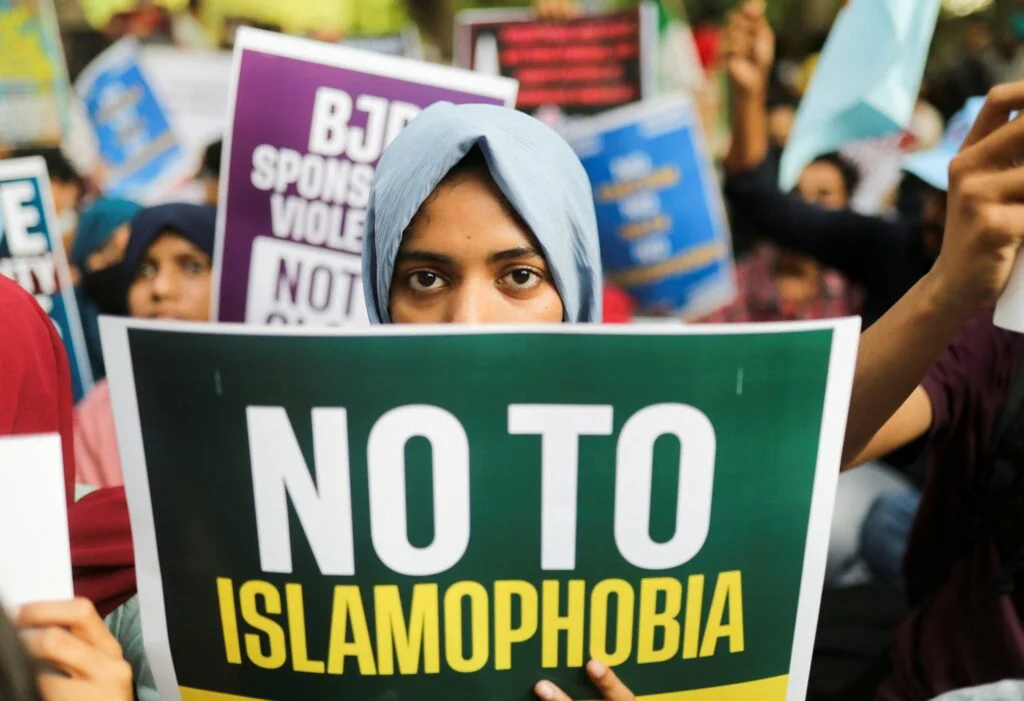
The Rajasthan Police arrested a government school principal from Kota’s Latoori village for deleting Ganesh Chaturthi greetings from a school WhatsApp group. Locals gathered outside the senior secondary school to demand the removal and arrest of the principal, Shafi Mohammed Ansari, on the grounds of ‘disturbing communal harmony‘. Police arrived at the scene to manage the situation, assuring the locals of action.
Subsequently, Principal Ansari was arrested under Section 127 of the Bharatiya Nagarik Suraksha Sanhita (BNSS), which deals with the disruption of communal harmony, following the filing of a complaint by the demonstrators. Later that evening, Ansari was granted bail and released.
The flimsy grounds over which Ansari was arrested lay bare the Hindutva strongarming at play here. Being charged with disrupting communal harmony over deleting messages is a mockery of the law and blatant misuse of it in furtherance of a divisive political ideology. It’s also a transparent effort to make an example of Ansari, a Muslim man, for his resistance to allowing religion into a space for education, and in doing so, inadvertently, countering the Hindutva effort to introduce religion into every aspect of public life and politicise it.
Schools as the site of majoritarian politics
Educational institutions should be wholly free of religion. However, through state efforts to introduce religiosity in educational institutions and staunch advocates of Hindutva within these institutions doing its bidding, resisting religiosity and the politics associated with it are becoming nearly unattainable. State inventions, under the facade of promoting knowledge of India’s culture or traditions, enable the backdoor entry of religiosity into education.
State inventions, under the facade of promoting knowledge of India’s culture or traditions, enable the backdoor entry of religiosity into education.
The Madhya Pradesh government, in 2021, included the Ramcharitramanas as an elective in undergraduate philosophy courses, with chapters on the ‘miraculous engineering of Ram Setu‘ and the ideals of Ram Rajya. In July 2024, a proposal was made to introduce Manusmriti to Delhi University’s undergraduate law programme, but this was later rejected owing to uproar. The Dean, Faculty of Law, was quoted as saying, ‘The Manusmriti has been introduced in line with the NEP 2020 to introduce Indian perspectives into learning‘.
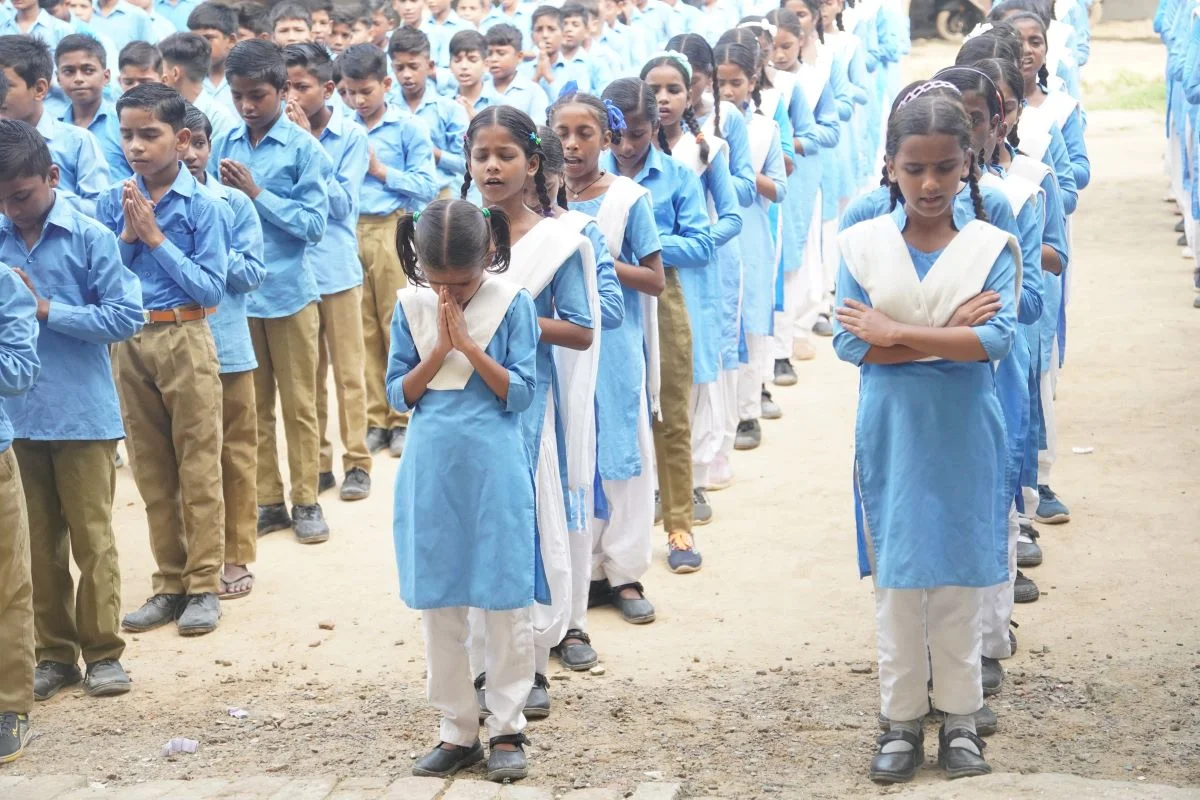
While most schools that provide secular education have long incorporated majoritarian religious practices, in some form or the other, with the popularisation and increasing acceptance of Hindutva politics, this is taking on a more conscious and malicious character, bearing greater consequences for minority students. However, this acceptance and spread of religiosity in schools is not uniform across religions, with only the expressions of majoritarian religions finding support. Religious expression by minorities are resisted and garners scrutiny, as evidenced by the row and protests over hijabs in schools.
The popular favour Hindutva has found translates into those subscribing to the ideology, and with power within these educational institutions, imposing it on others and targeting anyone who attempts to resist. The Latoori incident comes on the heels of the Amroha one, indicating a concerning pattern of schools succumbing to and adopting bigoted politics. In Uttar Pradesh’s Amroha, a Grade 3 student was expelled for bringing meat in his lunchbox.
In Uttar Pradesh’s Amroha, a Grade 3 student was expelled for bringing meat in his lunchbox.
The principal arguing – in a now-viral video – with the child’s mother, said the child has been bringing non-vegetarian food to school regularly and wants to convert other students to Islam, among other shockingly Islamophobic things. The principal also added that they don’t want to teach a child ‘with such morals, who will demolish our temples and bring non-vegetarian food (to school).‘
Unsurprisingly, the principal was let off the hook. The district administration’s investigation claimed that the video was edited and said the allegations against him were ‘baseless‘. Although, the National Commission for Protection of Child Rights (NCPCR, taking suo moto cognisance of the matter this week, has ordered the District Magistrate to conduct a new probe.
Schools that should be inclusive spaces for all students despite their social identities, are increasingly hostile and bigotry-laden for the country’s Muslim students. But this phenomenon of Hindutva entering classrooms and institutions jeopardises Muslim faculty, too. In May 2024, a Mumbai school principal, Parveen Shaikh, was fired from her role because she liked a pro-Palestinian post on social media. Ironically, the school, in a statement said they were terminating Shaikh to ensure their ‘ethos of unity and inclusivity‘ were not compromised.
Taking a generation into the Hindutva fold
Not falling in line with unspoken Hindutva diktats carries very real consequences for Muslim students and educators. However, the aggressive peddlers of Hindutva in these institutions also make schools a tool to disseminate its ideology and force compliance to it by making students’ access to an education and safe academic spaces contingent on it. This also threatens to bring an entire generation into the Hindutva fold from a young age by encouraging Islamophobia, discrimination against Muslims, and their othering. If students are exposed to such blatant Islamophobia committed with impunity, it normalises Hindutva rhetoric for them.

Children being drawn into the Hindutva fold isn’t merely a by-product of the pervasiveness of the ideology, it is a targeted effort. From the saffronisation of school curricula to Hindutva outfits creating dedicated youth wings, making Hindutva palatable and even appealing to an entire generation of young people has been a task Hindutva ideologues have been dedicated to.
The Sangh Parivaar has long adhered to its playbook of inducting children into its organisations to indoctrinate them. Popular Sangh outfits have dedicated youth wings that are just as bigoted and radicalised as their parent organisations. The Bajrang Dal, which is the youth wing of the Vishwa Hindu Parishad (VHP), has been embroiled in controversies since its inception and involved in many instances of violence. The RSS’s Akhil Bharatiya Vidyarthi Parishad (ABVP), which is a student body active in universities and colleges across the country, has long been accused of instigating violent clashes on campuses.
A 2016 Outlook investigation found that Sangh outfits had taken 31 tribal girls from Assam to Punjab and Gujarat to Hinduise them. Some of the children were as young as three years old.
But Hindutva’s efforts to radicalise the young go beyond just creating youth wings and taking children into the fold of Sangh organisations. Efforts at indoctrination can be much more sinister. A 2016 Outlook investigation found that Sangh outfits had taken 31 tribal girls from Assam to Punjab and Gujarat to Hinduise them. Some of the children were as young as three years old.
Sangh-affiliated schools, of which there are many, also force Hindutva upon children. RSS’s Vidya Bharati schools have been found to use textbooks and teaching materials that distort historical facts, and present Hindutva fiction in its stead, to radicalise students. In 2019, controversy erupted over an annual day play in a school run by an RSS functionary in Karnataka, which saw students reenacting the demolition of the Babri Masjid. Students were also seen carrying arms in West Bengal during a 2017 RSS rally.
Similar concerns regarding Ekal schools have also arisen. Conceptualised and developed by RSS functionaries and with close associations with the Vishwa Hindu Parishad, these schools have over a hundred thousand branches across the country. While claiming to provide free education to poor children who can’t afford or access education otherwise, these schools are notorious for promoting Hindu Nationalist ideas and Hindutva rhetoric among students. In 2009, the government stopped grants to Ekal schools, after a report revealed these funds were being misused for ‘creating disharmony amongst religious groups and creating a political cadre‘.
Hindutva groups have also mobilised youth from the shadows. In 2022, when students protested against their hijabi classmates in Karnataka’s Udupi, a TNM investigation found that the protests weren’t spontaneous and were instigated by a local Hindutva outfit called Hindu Jagarana Vedike, which also provided them with saffron shawls and turbans. Even when Sangh organisations don’t bring Hindutva to schools, individuals subscribing to the ideology do. Last year, in Uttar Pradesh, a schoolteacher asked students to slap their seven-year-old Muslim classmate, while she made Islamophobic remarks and admonished students to hit the child harder.
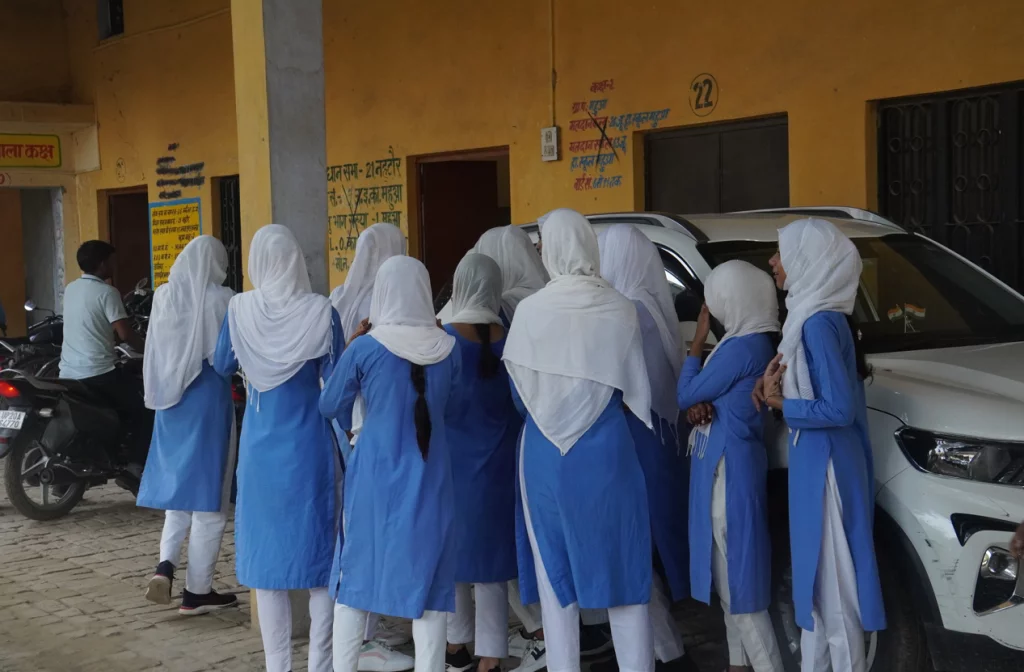
India’s children are being exposed to and fed bigotry and hate to indoctrinate them for the benefit of extremist political ideologies. While a whole generation of children is exposed to the threat of becoming radicalised adults, their peers from minority and marginalised identities are confronted with the reality of being recipients of the prejudice, discrimination, and violence stemming from such radicalisation. The spread of Hindutva within our schools threatens to embed bigotry and Islamophobia in the DNA of a generation and make them pawns or foot soldiers of Hindutva extremism.
The principal in Latoori was seen as attacking religious beliefs when he was merely trying to create a secular environment within his school. But this is a culmination of years of Hindutva propaganda that has positioned any attempt at having secular spaces as a direct attack on Hinduism. Hindutva’s most troubling feat perhaps is that it has convinced millions that secularism – as in both the inclusion of all religions or the equal exclusion of them from certain spaces – is an atrocity of unimaginable magnitude, and used it to strengthen Hindutva fiction and conspiracy theories of systematic attacks on Hinduism.
The principal in Latoori was seen as attacking religious beliefs when he was merely trying to create a secular environment within his school.
We are relentlessly fed these falsehoods and malicious distortions from numerous avenues of propaganda but the arrival of Hindutva in schools is making even children susceptible to it by having them witness bigotry and intolerance committed casually and without consequence. If today we don’t reckon with Hindutva’s damaging spread within schools and educational institutions, then tomorrow we will have to reckon with losing part of a generation to extremism and part to victimisation due to extremism. This is a failure of all of India’s children.
About the author(s)

